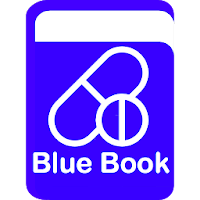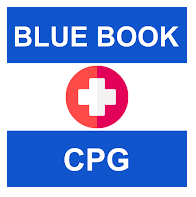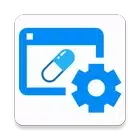Drug Formulary App
Introduction
Ministry of Health Medicines Formulary (MOHMF) is a valuable resource for healthcare professionals practicing at Malaysia.
- It provides quick information on indications, dosage, availability and prescribing category.
- Also, it forms the hospital/clinical drug formulary foundation for all government healthcare facilities at Malaysia.
Self-Driven Initiatives
Multiple unofficial attempts have been made, first started with My Blue Book by My Pharmacist House (last updated to MOHMF 2016-2), followed with Blue Book (Updated+Brand Name Search) by Apicel (last updated to MOHMF 2020-2) and Blue Book + CPG Malaysia by Ice Cream App (last updated to MOHMF 2023-2).
- All of these applications are no longer being updated, and the first two have already been removed from the App Store.
These self-driven initiatives are infrequently updated and offer little additional value.
- Therefore, with the introduction of the official MyFormulary app, they become obsolete.
MyFormulary App and The Way Forward
The official MyFormulary app is finally available.
- It is a progressive web app (PWA), meaning you can add it to your phone home screen for offline access.
- The app also features a common medical calculator.
- Logging in with intranet pharmacy account unlocks additional information, such as official circulars and related forms.
Nonetheless, there are still limitations in day-to-day use.
- Not all hospital drugs are listed in MOHMF.
- Not all drugs in MOHMF are available in our hospital/clinic.
Hence, the official app should incorporate a feature of local hospital/clinic drug formulary.
- The application should automatically sync the local formulary with the MOHMF (the backbone database) to ensure all changes in indications, prescribing restrictions, dosing, prescribing categories and precautions are reflected.
- For drugs that are not available in the MOHMF, a separate drug list with detailed indication and dosage information should be created. This would allow individual facilities to activate these medicines into their own formulary if necessary.
- Similarly, the off-label uses can be clearly highlighted too.
- There should be specific remarks section available for each facility to annotate more information, such as
- Formulary status information (prescribing restrictions on department, prescriber or patient basis)
- Notes on local practices or quick info reminders (e.g. prandial advice, cold-chain, counselling points).
- In terms of security, intranet pharmacy account will be required for all users, regardless of access level (read-only, editor or admin).
Additionally, the app can be further enhanced by including additional functionalities such as brand name search, drug album, drug interaction checking and real-time updates on drug shortage.
Summary
The National Institute for Health and Care Excellence (NICE) has produced guidelines on developing and updating local formularies.
- Ideally, all relevant local formulary information should be published online in a clear, simple and transparent manner to allow rapid adoption of new medicines and treatments
- This information should include formulary policies, meeting minutes and decision outcomes.
In 2020, I was inspired by the Drug Formulary DIY app by developer Apicel to create my own drug database.
- However, the app was unpublished from the Google Play Store due to technical coding issues.
- The developer decided not to rewrite the app from scratch.
This led me to wonder if there were any IT tools that could simplify the process of creating mobile apps for people with zero coding skills.
- I conducted a Google search and discovered Glide, a tool that allows users to build mobile apps from spreadsheets without coding.
- I then explored some alternative options:
- AppSheet - Ideal for personal use
- Caspio
- MDict - Lacks real-time database updates
- Open as App - Useful for designing calculator-type apps, but basic free plan is discontinued
- Wistify.app - Basic app with a security password feature
Ultimately, I developed Rx, a self-initiated drug database project that supplements existing MOHMF information with details I believe are valuable in daily practice but are currently missing.
- While Rx may not be as perfect or comprehensive as established drug databases, I have spent years refining it.




Hi, im enjoying reading your posts. Keep up the good work ya. Thank you
ReplyDelete